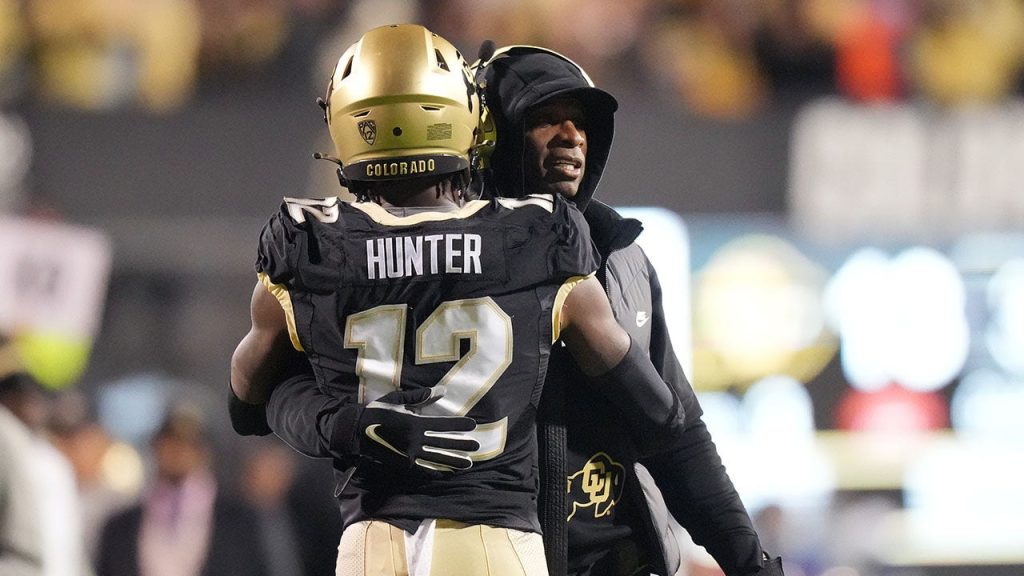Travis Hunter, the two-way star from Colorado, has set his sights on becoming the NFL’s equivalent of Shohei Ohtani, the baseball phenomenon who excels as both a pitcher and a hitter. Hunter’s remarkable performance during the past season, where he showcased his prowess on both offense and defense, has fueled this ambition. Accumulating over 1,000 snaps, Hunter dominated on both sides of the ball, earning him the prestigious Heisman Trophy. His exceptional skills also garnered him the Biletnikoff Award, recognizing him as the nation’s top receiver, and the Bednarik Award, honoring him as the defensive player of the year. This unprecedented achievement underscores Hunter’s unique talent and potential to revolutionize the NFL landscape.
While many experts project Hunter to play cornerback in the NFL, his offensive statistics are equally compelling. He hauled in 92 receptions for 1,152 yards and scored 14 touchdowns, demonstrating his ability to be a game-changer on offense. Deion Sanders, Hunter’s head coach at Colorado, vehemently advocates for Hunter’s utilization on both sides of the ball at the professional level. Sanders has made it clear that any team drafting Hunter should fully embrace his versatility and allow him to showcase his abilities on both offense and defense, warning against drafting him otherwise. This strong endorsement from a legendary NFL figure adds significant weight to Hunter’s aspirations.
Sanders envisions a “creative” approach to utilizing Hunter’s skills in the NFL, suggesting that he doesn’t necessarily need to replicate the heavy workload he carried at Colorado, where he played nearly every snap. At Colorado, Hunter played 670 snaps on offense, 686 on defense, and even contributed 24 snaps on special teams, demonstrating his exceptional stamina and dedication. While such a demanding role might not be sustainable in the NFL, a more strategically managed workload could maximize his impact on both sides of the ball.
Despite projecting as a cornerback at the professional level, Hunter’s offensive performance in the past season may have even surpassed his defensive contributions. He anchored Colorado’s defense with 31 tackles, 11 pass deflections, and four interceptions, demonstrating his prowess as a cornerback. However, his offensive numbers suggest he could be an equally, if not more, valuable asset on that side of the ball. This presents a compelling dilemma for NFL teams considering drafting him and underscores the unique value he brings to the table.
Hunter is widely projected to be an early selection in the upcoming NFL Draft, and his quarterback at Colorado, Shedeur Sanders, Deion’s son, is also considered a potential top pick. This dynamic duo could potentially reshape the landscape of the NFL, with Hunter’s two-way abilities and Shedeur’s quarterbacking skills offering a unique combination of talent. The NFL awaits with anticipation to see how Hunter’s career unfolds and whether he can live up to the lofty comparisons to Shohei Ohtani.
The prospect of Hunter becoming the NFL’s version of Ohtani is tantalizing. His ability to excel on both sides of the ball presents a unique challenge and opportunity for NFL teams. If a team is willing to embrace his versatility and craft a strategic plan to utilize his skills effectively, Hunter could become a revolutionary figure in the league. His success would not only validate his own ambition but also potentially pave the way for other two-way players, transforming the traditional roles within the NFL and adding a new dimension to the game. The upcoming draft holds the key to Hunter’s future and the potential realization of his Ohtani-esque aspirations.

